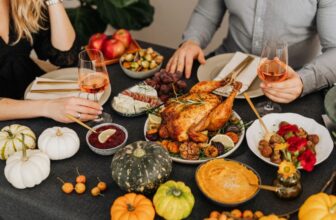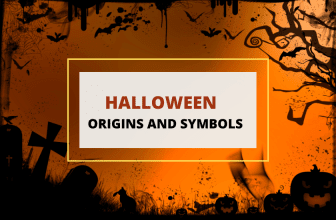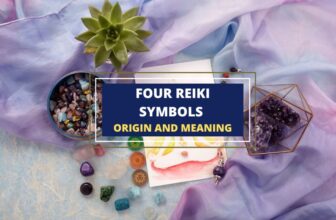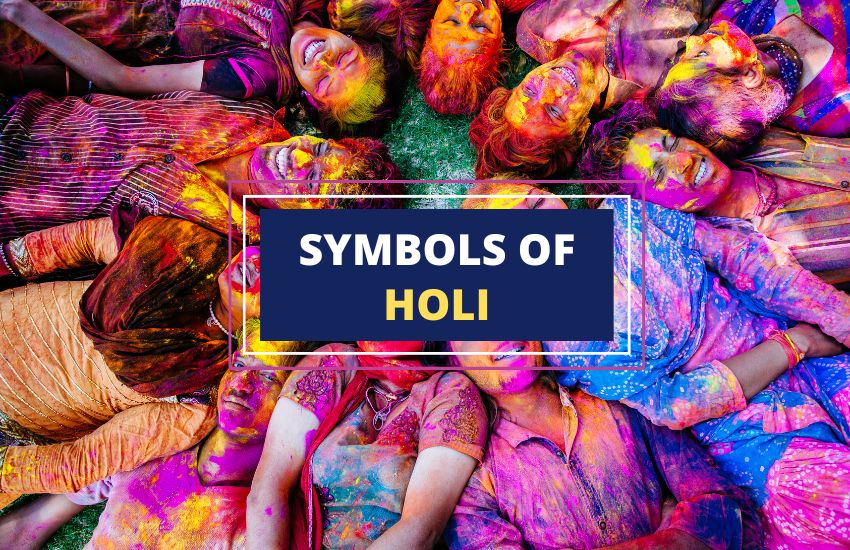
Table of Contents
Holi, the Festival of Colors, is one of the most vibrant and exciting festivals in India. It’s a celebration of love, unity, and the triumph of good over evil. From the playful water fights to the colorful powders that drench the streets, Holi is a visual spectacle that captivates the senses. The festival is steeped in symbolism, and each element holds a special significance that adds to the joyous atmosphere.
In this article, we’ll explore the fascinating symbols of Holi and their cultural significance, from the bonfire of Holika Dahan to the playful throwing of colored powders.
1. Holi Hai
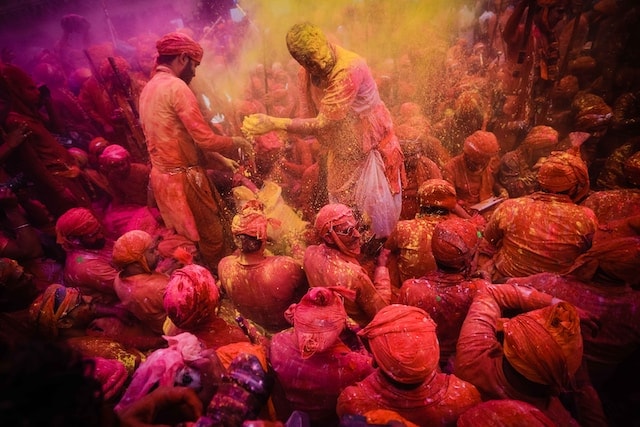
Holi Hai! These two words are enough to capture the essence of the vibrant Hindu festival of Holi. It’s a time when people forget their worries and indulge in a riot of colors and fun. Holi is celebrated in the spring, with people covering each other in colored powder and water. But the festival is more than just colors and joy.
It’s a symbol of togetherness, breaking down social barriers and fostering a sense of community. The phrase Holi Hai captures this spirit perfectly, reminding us to embrace diversity, cherish our relationships, and celebrate the gift of life.
2. Barsana Lathmar Holi Sticks
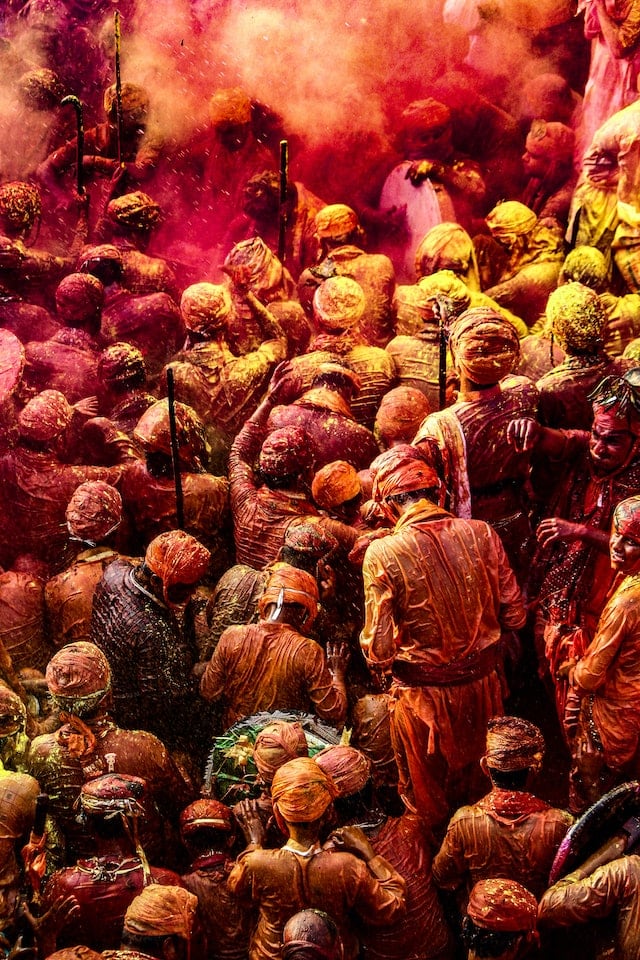
Barsana Lathmar Holi is a one-of-a-kind celebration held in Barsana, a town in northern Uttar Pradesh, India. During this festival, women playfully beat men with sticks while the men try to shield themselves from the blows.
This tradition is rooted in a mythological tale of Lord Krishna visiting Barsana and teasing the women. In response, the women chased him away with sticks. Barsana Lathmar Holi represents the power dynamics between men and women in a playful and lighthearted manner.
The women are assertive and confident, while the men assume a more submissive role. This reversal of gender roles highlights the festival’s larger message of breaking down social barriers and fostering a sense of community.
3. Bonfire (Holika Dahan)
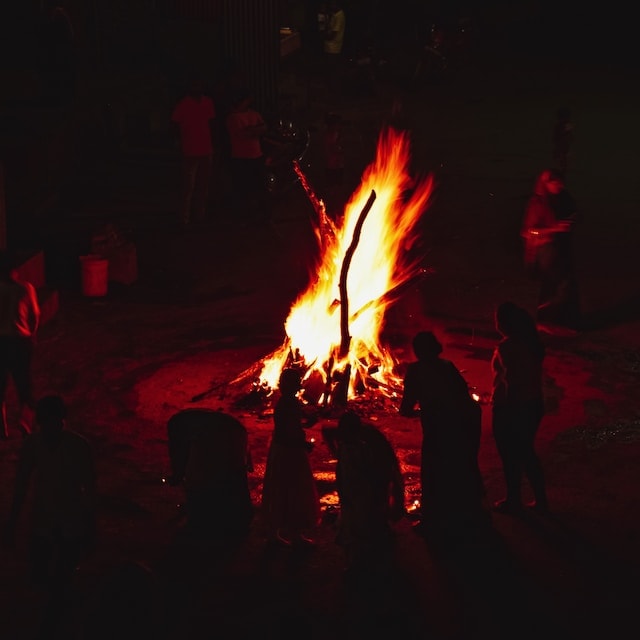
At the heart of the Holi festival is the bonfire, or Holika Dahan, which is a sacred ritual performed on the eve of Holi. During the ceremony, people gather to light a fire and burn an effigy of the demoness Holika.
According to Hindu mythology, Lord Vishnu took away her powers and bestowed them upon his devotee Prahlada. The bonfire represents the triumph of good over evil and the victory of righteousness over sin. This age-old tradition reminds us of the importance of shedding negativity and embracing positivity in our lives.
4. Colored Powders (Gulal)
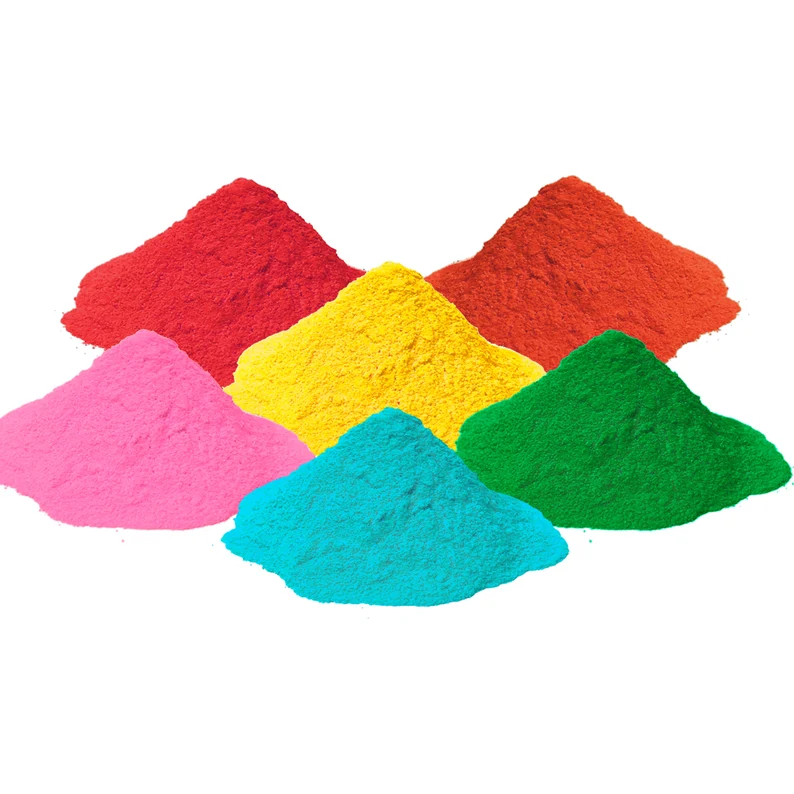
Gulal, the colorful powders used during the Holi festival, are a defining symbol of the celebration. These powders are available in a range of striking hues and are used to sprinkle on one another’s faces and clothing during the festivities.
Gulal represents the excitement and energy of life and provides a way for people to express their enthusiasm and vigor for the occasion. The powder’s bright colors symbolize the onset of spring and the renewal of life, bringing with it new opportunities, new beginnings, and the promise of joy and happiness.
5. Dahi Vada
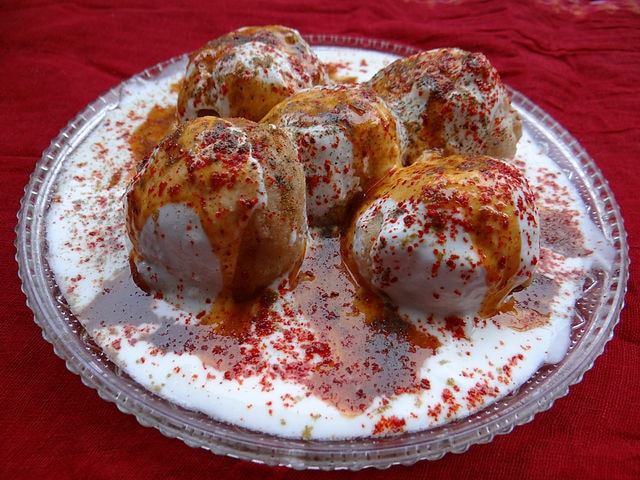
Dahi vada is a mouth-watering dish that exemplifies the culinary diversity of India. The deep-fried lentil balls soaked in yogurt and topped with spices and chutney make for a perfect blend of flavors and textures.
This savory delight is especially popular during Holi and is a favorite at festive gatherings and feasts. The dish represents the rich cultural heritage of the country and is a reflection of India’s diverse culinary traditions.
Dahi vada is more than just a dish; it symbolizes the spirit of togetherness and sharing that is at the heart of the Holi festival. The act of sharing food during the festival promotes a sense of community and strengthens relationships.
Whether it’s with family, friends, or even strangers, the tradition of feasting and sharing food during Holi brings people together in a celebration of life and love.
6. Gujiya
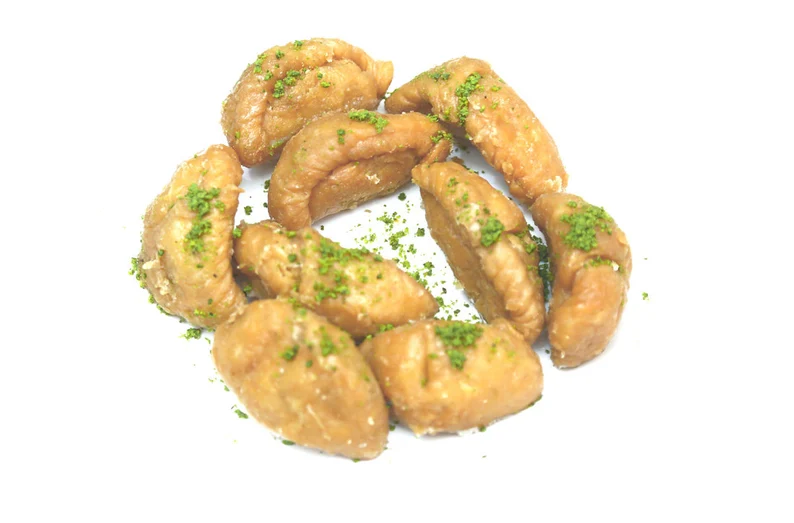
Gujiya, a crescent-shaped traditional sweet baked good, is a staple during the Holi festival. Made with flour, sugar, nuts, and dried organic products, it is often served alongside other bubbly dishes.
Gujiya represents the rich culinary legacy of India and is a symbol of the sweet and happy spirit of the festival. During the celebration, people exchange sweets and other delights to share their happiness with others.
The act of giving and receiving desserts is a strong symbol of friendship and generosity, reflecting the larger message of the festival – to celebrate life and cherish our relationships with loved ones.
7. Holi Dances
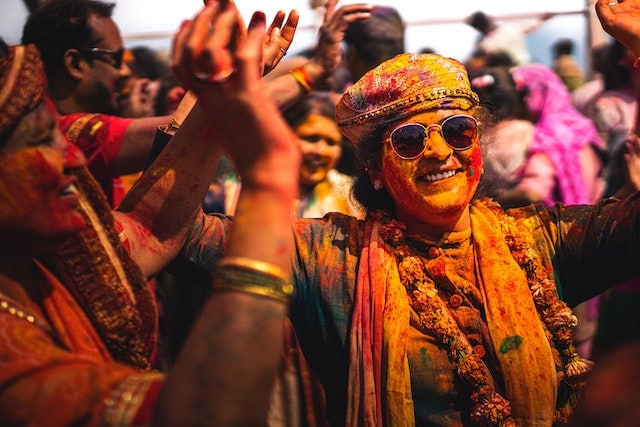
Holi dances are an integral part of the vibrant Holi festival. These lively dances are performed in groups, accompanied by traditional music and singing. The Bhangra, the most popular Holi dance, originated in the Punjab region of India and is enjoyed by people of all ages.
In addition to the Bhangra, other popular Holi dances include the Dandiya and Garba, which are traditional folk dances from the state of Gujarat. These dances embody the festival’s joy and energy and are an opportunity for people to come together and celebrate, regardless of their backgrounds or differences. Whether it’s the foot-tapping beats of Bhangra or the rhythmic movements of Garba, Holi dances are a symbol of the festival’s exuberance and community spirit.
8. Holi Greeting Cards
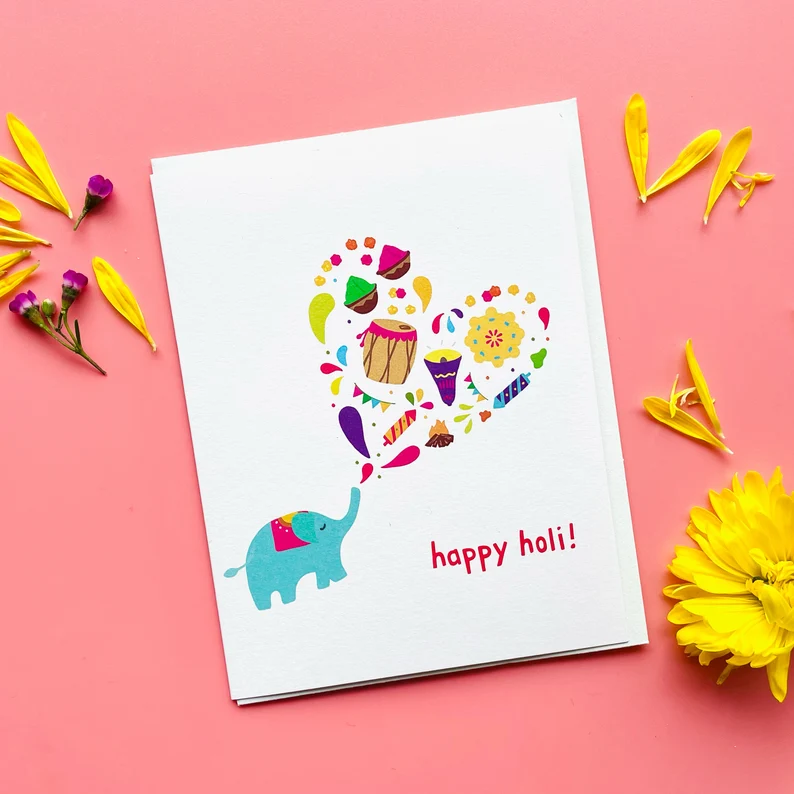
Holi greeting cards have long been a popular way to exchange good wishes and greetings during the festival of Holi. These vibrant cards are adorned with colorful designs and uplifting messages, and they are often exchanged among friends and family.
Despite being an old tradition, sending Holi greeting cards remains a popular practice in modern times. The act of sending and receiving these cards is a symbol of the deep love and affection that people have for one another during this festive occasion.
The tradition of exchanging Holi greeting cards reminds us of the importance of staying connected with our loved ones and sharing our joy and happiness with them.
9. Holi Parties
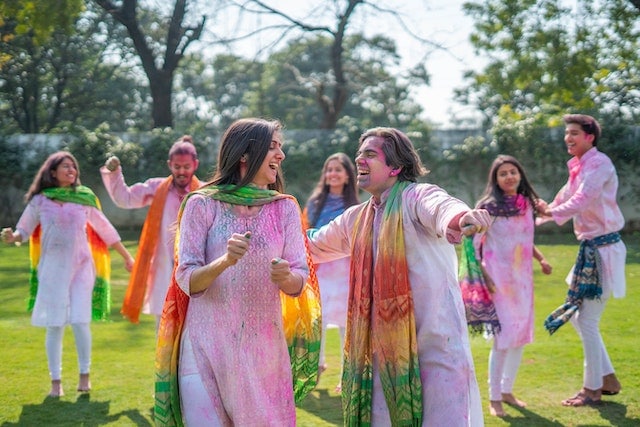
Holi parties are an integral part of the celebration of the festival of Holi. These parties are often held in homes, public spaces, or large venues, featuring lively music, energetic dancing, and the playful tossing of colored powders.
The vibrant atmosphere of Holi parties symbolizes the joy and excitement of the festival, and provides a way for people to come together and celebrate in a spirit of camaraderie and unity.
The parties offer an opportunity for friends, family, and neighbors to socialize and strengthen their bonds, while also welcoming new acquaintances into their midst. Holi parties are a lively and colorful expression of the festival’s message of love, joy, and togetherness.
10. Lord Krishna
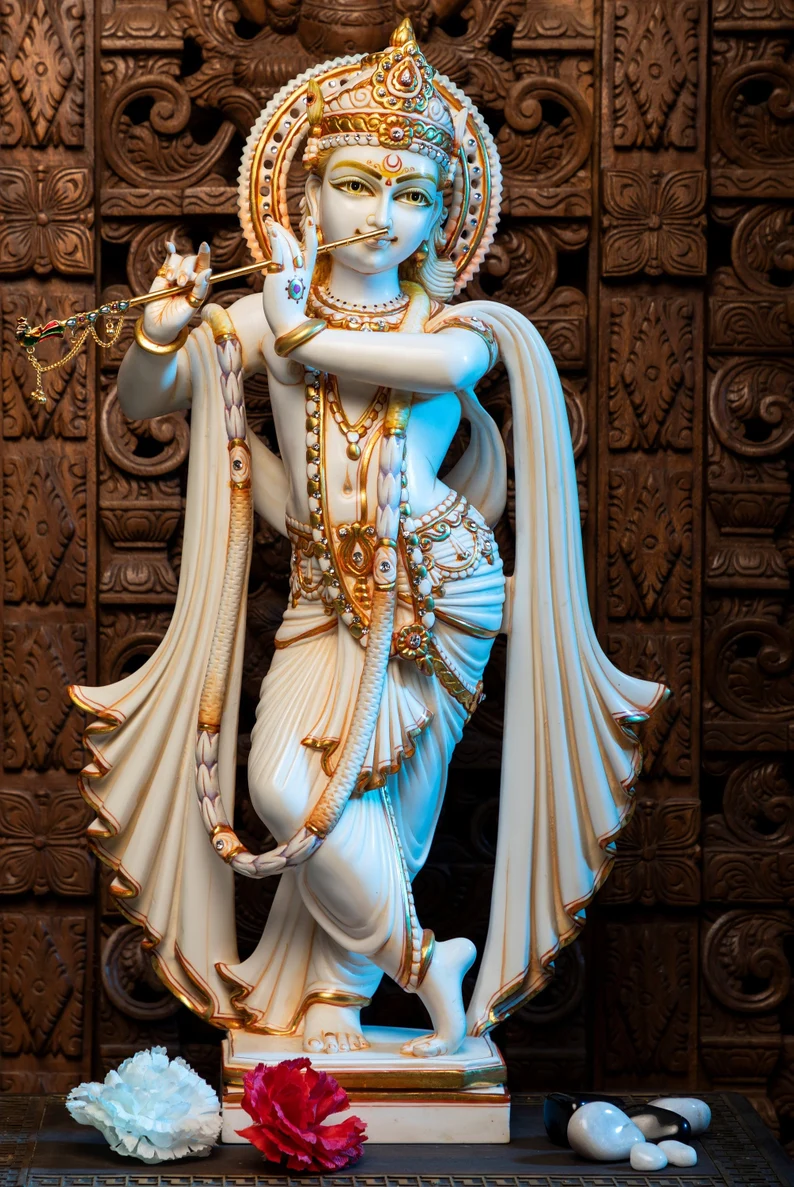
The Holi festival is closely associated with Lord Krishna, a prominent deity in Hinduism. The festival’s origins can be traced back to the playful interactions between Krishna and his beloved Radha.
According to legend, Krishna would playfully apply colors to Radha’s face, and in turn, Radha and her friends would douse Krishna with colored powders. The tradition of playing with colors during Holi symbolizes the joy and love between Krishna and Radha, and the larger message of breaking down social barriers to foster unity and friendship.
Krishna’s mischievous and playful nature is an integral part of the Holi celebrations and is celebrated with great enthusiasm and zeal.
11. Malpua
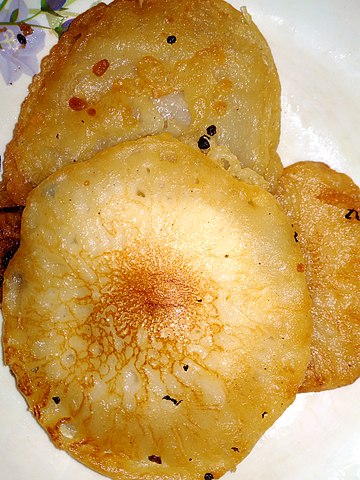
Malpua, a sweet pancake, is an integral part of the Holi festival. This delectable dessert is made by frying a mixture of flour, milk, and sugar until crispy and then soaking it in syrup. During Holi, Malpua is a popular dessert that is often served with other festive dishes, adding to the joyful atmosphere of the celebrations.
The dish represents India’s rich culinary heritage and symbolizes the sweet and joyous spirit of the festival. Sharing and exchanging traditional foods like Malpua is an essential part of Holi, bringing people together to enjoy the festival’s happiness and merriment.
12. Pots of Colored Water
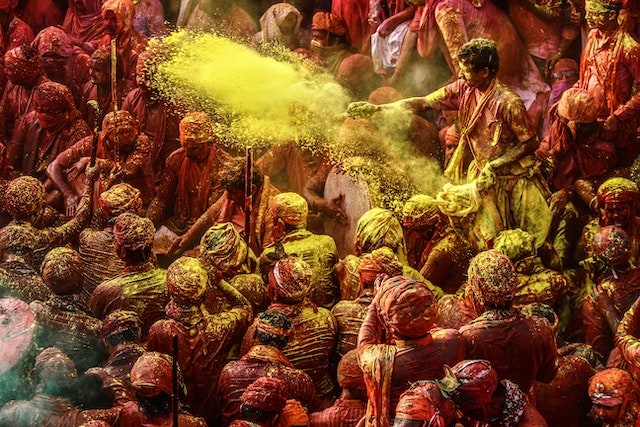
Pots of colored water are not only an essential but also one of the most exciting aspects of the Holi festival. These pots, also known as ‘pichkaris,’ come in various sizes and shapes, from small handheld ones to large water guns.
People fill these pichkaris with colored water and drench their friends and family, creating an atmosphere of fun and laughter. In addition to symbolizing the joy and vibrancy of life, these pots of colored water also have a deeper meaning in Hindu mythology.
According to legend, Lord Krishna used to playfully splash colored water on the gopis, his female companions, during the spring season. This tradition later evolved into the Holi festival, and today, it is one of the most anticipated and cherished celebrations in India.
13. Radha
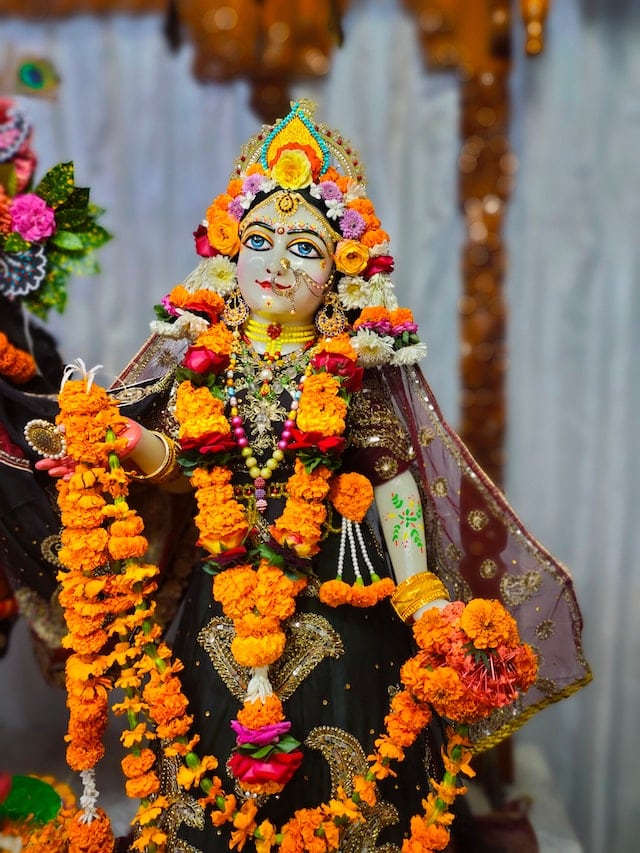
Radha is an essential symbol of the Holi festival, and her significance can be traced back to Hindu mythology. She is known to be the beloved of Lord Krishna and represents the ideal of divine love in Hinduism. Radha and Krishna’s love story serves as a reminder of the importance of love and devotion in Indian culture.
During the Holi festival, Radha is often depicted alongside Lord Krishna in paintings, plays, and other cultural events, symbolizing their spiritual connection and the ideal of pure love. Radha’s presence at the Holi festival represents the spirit of the festival- joy, celebration, and the victory of good over evil.
She is a powerful symbol of the rich cultural heritage of India, and her role in the festival serves as a reminder of the country’s ancient traditions and values. Celebrating the Holi festival with Radha’s presence serves as an invitation to embrace the love, positivity, and devotion that she represents.
14. Rangoli
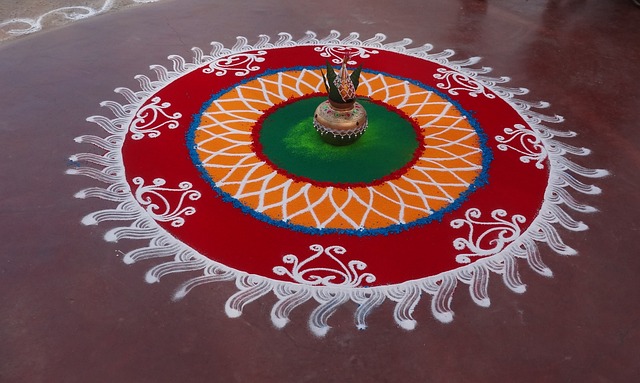
Rangoli is a captivating and colorful art form that has been an essential part of the Holi festival for centuries. The tradition involves creating intricate and vibrant designs using colored powder, rice, or flower petals.
Rangoli is a symbol of creativity, beauty, and artistic expression, and its presence during the Holi festival adds to the festive atmosphere. The designs of Rangoli are often inspired by traditional Indian motifs and patterns, such as peacocks, lotus flowers, and geometric shapes.
The process of creating Rangoli is a social activity that brings people together to share their skills and creativity. The practice of making Rangoli is not only a fun activity, but it also has a deeper meaning as it represents a way to welcome and honor the gods and goddesses during the festival.
15. Thandai
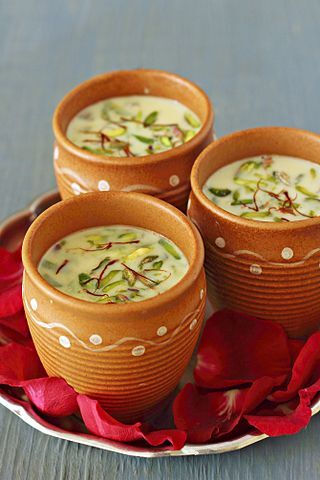
Thandai is a traditional Indian drink that has become synonymous with the Holi festival. This refreshing beverage is made by blending together a mixture of milk, nuts, and spices, including almonds, pistachios, cardamom, and saffron. Thandai is often served chilled, making it a perfect choice for the warm and sunny weather of the Holi season.
The drink is an essential part of Holi celebrations, symbolizing the festive spirit and joy of the occasion. The unique blend of ingredients in Thandai is not only delicious but also has a cooling effect, which helps combat the heat and humidity of the Indian summer. Thandai is also believed to have medicinal properties and is known to aid digestion and provide a refreshing burst of energy.
16. Water Balloons
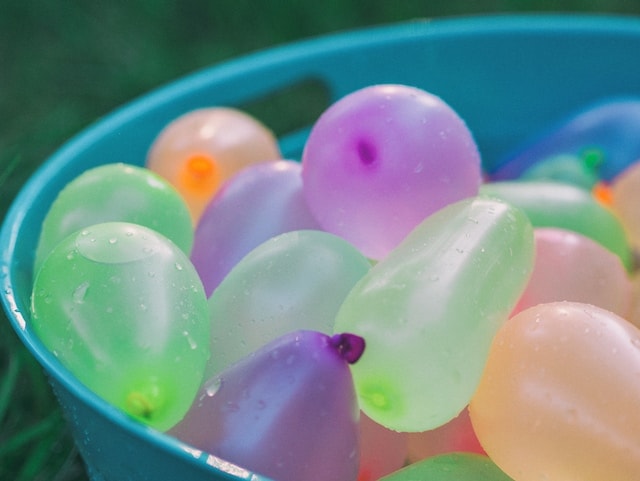
Water balloons are an iconic and fun-filled part of the Holi festival. They are often filled with vibrant colored water and used to playfully drench friends and family. The act of throwing water balloons at each other is an exciting way to express joy, laughter, and happiness during the festival.
This activity brings people together and creates a sense of unity and camaraderie. Water balloons have become a popular way to celebrate Holi, especially among younger generations.
They are an easy way to add color and fun to the celebrations and create a festive atmosphere. Playing with water balloons during Holi has become a tradition that is enjoyed by people of all ages, making it a unique and cherished part of the festival.
17. White Clothes
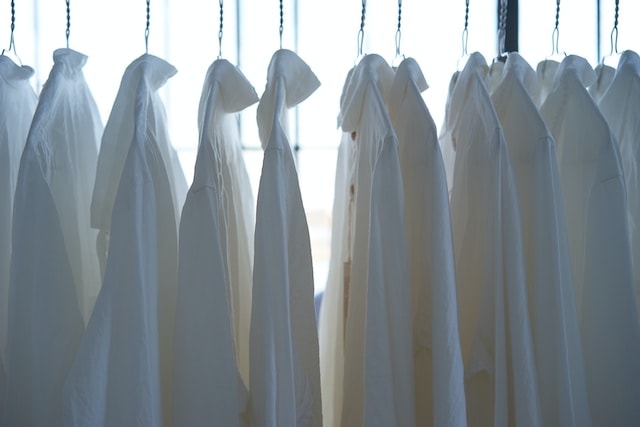
In the Holi festival, the wearing of white clothes is a longstanding tradition that holds great significance. White is considered to be a symbol of purity, peace, and tranquility. It also represents a blank canvas, ready to be filled with the bright and bold colors of the festival.
The use of white clothes during Holi is a way of showcasing the vibrancy and joy of life, and the colorful powders thrown during the celebrations are a symbol of the triumph of good over evil.
In addition to being a canvas for the colors, white clothes also help to highlight the beauty of the rangoli designs and other decorations created during the festival. The tradition of wearing white clothes also represents a fresh start, a new beginning, and the hope of a bright and colorful future.
18. Love

Love is an integral part of the Holi festival, with people embracing the joyous spirit of the occasion to celebrate the bonds of love and friendship. It is a time to forget past grievances and come together to express love and affection towards each other. Holi is a festival of forgiveness and renewal, with people starting anew with a clean slate.
The celebration of love during Holi is also reflected in the mythological story of Radha and Krishna, who are revered as the epitome of divine love. Their love and devotion for each other serve as a powerful symbol of the festival’s spirit and are a source of inspiration for many.
The celebration of Radha and Krishna’s love is a significant aspect of the festival, with devotees offering prayers and seeking blessings for their own relationships.
19. Spring

The arrival of spring brings a sense of renewal and rejuvenation after the long, cold winter months. Holi, the festival of colors, is a celebration of this new beginning and the vibrant colors that come with it.
The festival is marked by bright hues, colorful decorations, and the sweet scent of springtime flowers. Spring is also a time of growth and transformation, as the world around us begins to bloom and flourish. The Holi festival embodies this spirit of growth and renewal, as people come together to celebrate and embrace new beginnings.
The festival’s focus on positivity, hope, and optimism serves as a reminder to embrace the beauty of life and to look forward to the opportunities that the future holds.
Origins and Traditions of Holi
Holi, one of India’s most significant festivals, has its roots in ancient Hindu mythology and cultural traditions. The festival is celebrated across India and has a rich history that dates back to centuries. Holi’s origins are based on various legends, and one of the most popular stories associated with the festival involves the demon king Hiranyakashipu, his son Prahlada, and his evil sister Holika.
Hiranyakashipu, who craved for immortality and invincibility, became arrogant and demanded that everyone worship him as a god. However, his son Prahlada remained a devout follower of Lord Vishnu, which angered Hiranyakashipu.
He plotted to kill Prahlada with the help of his sister Holika, who was immune to fire. Holika carried Prahlada into a blazing pyre, but miraculously, she was the one who perished, while Prahlada remained unharmed, as he was under the protection of Lord Vishnu.
This legend of the victory of good over evil is celebrated during Holi, where people light bonfires to symbolize the triumph of virtue over vice. The story of Hiranyakashipu, Prahlada, and Holika serves as a reminder of the importance of faith, devotion, and righteousness in one’s life.
FAQs about Holi
Holi is a popular Hindu festival that marks the arrival of spring and celebrates the victory of good over evil
Holi is celebrated on the full moon day of the Hindu month of Phalguna, which usually falls in February or March.
Some traditional foods associated with Holi include gujiya (sweet dumplings), thandai (a refreshing milk-based drink), and bhang (a cannabis-infused drink).
Throwing colored powders during Holi is a way of celebrating the festival’s spirit of joy, unity, and love. The powders also have cultural and religious significance.
The bonfire ceremony, known as Holika Dahan, symbolizes the victory of good over evil and the triumph of light over darkness. It is also associated with the mythological story of Hiranyakashipu, Prahlada, and Holika.
Wrapping Up
The symbols of Holi hold a special place in Indian culture and are an integral part of the festival’s celebrations. Whether it’s the vibrant colors, the traditional clothing, the delicious food and drinks, or the playful water balloons, each symbol represents a unique aspect of the festival’s spirit.
By embracing these symbols, we can fully immerse ourselves in the joy and positivity of the festival and celebrate with our loved ones.
Similar articles:
20 Important Symbols of Ramadan
25 Symbols of Holidays that Will Get You in the Holiday Spirit
20 Profound Symbols of Celebration and Their Meanings
25 Symbols of 4th of July and What They Really Mean
11 Powerful Healing Symbols and Their Meanings (With Images)





